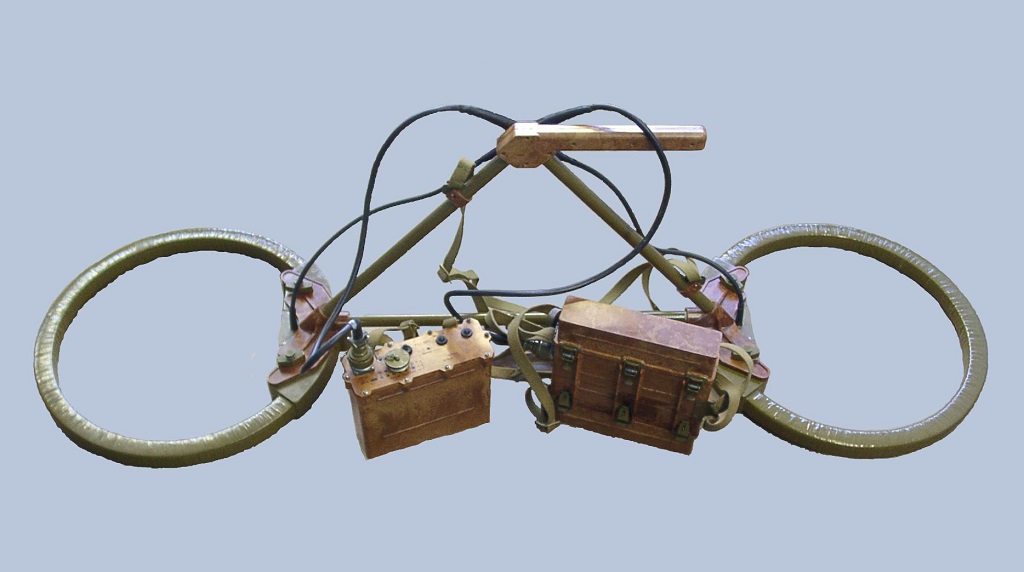ИМБ (IMB) Pulse Induction Metal Detector is a russian military class pulse induction metal detector developed in 1985 designed to locate mines.
It's really heavy.. arround 20kg.

They are hard to come by and cost 2000-4000$ in my research.
It's a two box construction with 3 parts: coil construction, transmit-receiver and power supply.
The transmitted signal is bipolar half sine wave. Rumors say this device has been reused in Anker Pulse, Fau Pulse and few others (speculation).
Prices of the clones are roughly the same as the original device.
Wave forms:

Block diagram:

Original manual in Russian (too big to upload):
http://s000.tinyupload.com/download....71878902631965
Partial schematics /with errors/ but the only one I could find:
Schematic.pdf
PSU.pdf
It's really heavy.. arround 20kg.
They are hard to come by and cost 2000-4000$ in my research.
It's a two box construction with 3 parts: coil construction, transmit-receiver and power supply.
The transmitted signal is bipolar half sine wave. Rumors say this device has been reused in Anker Pulse, Fau Pulse and few others (speculation).
Prices of the clones are roughly the same as the original device.
Wave forms:
Block diagram:
Original manual in Russian (too big to upload):
http://s000.tinyupload.com/download....71878902631965
Partial schematics /with errors/ but the only one I could find:
Schematic.pdf
PSU.pdf

 I tested several modern magnetometers none of them can not half of that Russian military magnetometer
I tested several modern magnetometers none of them can not half of that Russian military magnetometer  .Otherwise Anker not sold outside Russia Pulse Anker ie (ibm) no matter how much you pay!
.Otherwise Anker not sold outside Russia Pulse Anker ie (ibm) no matter how much you pay!


Comment